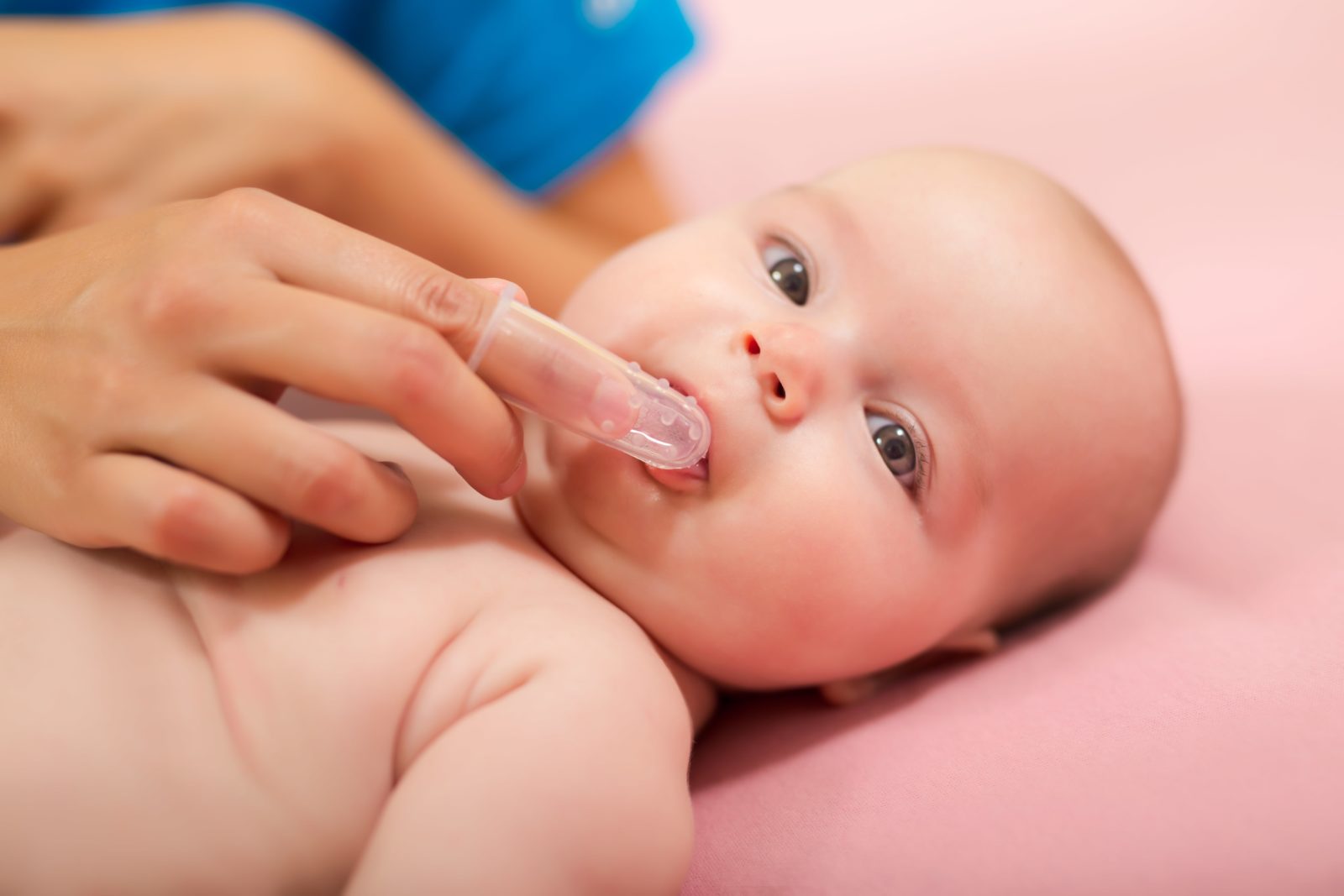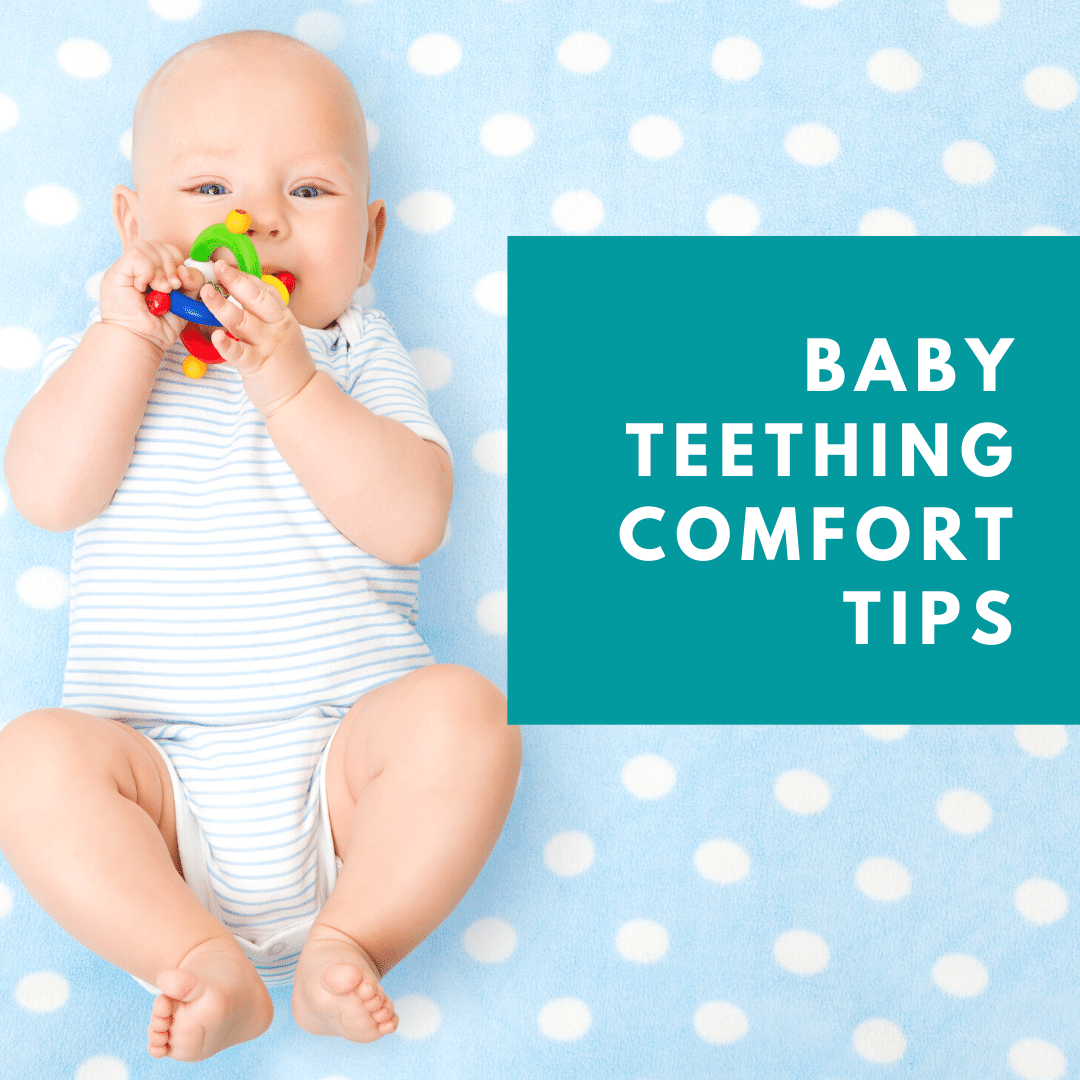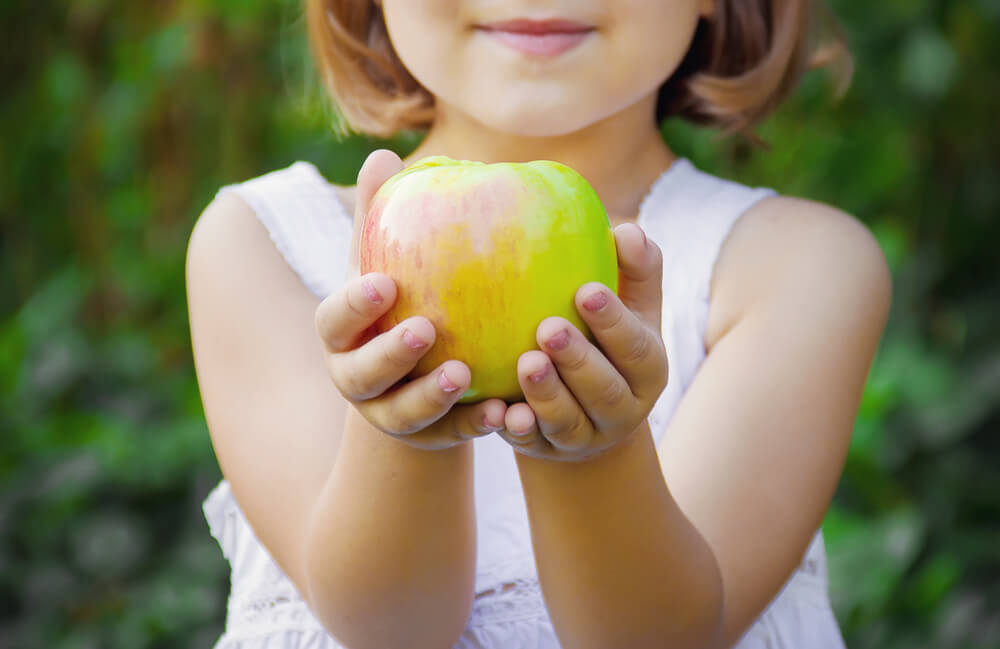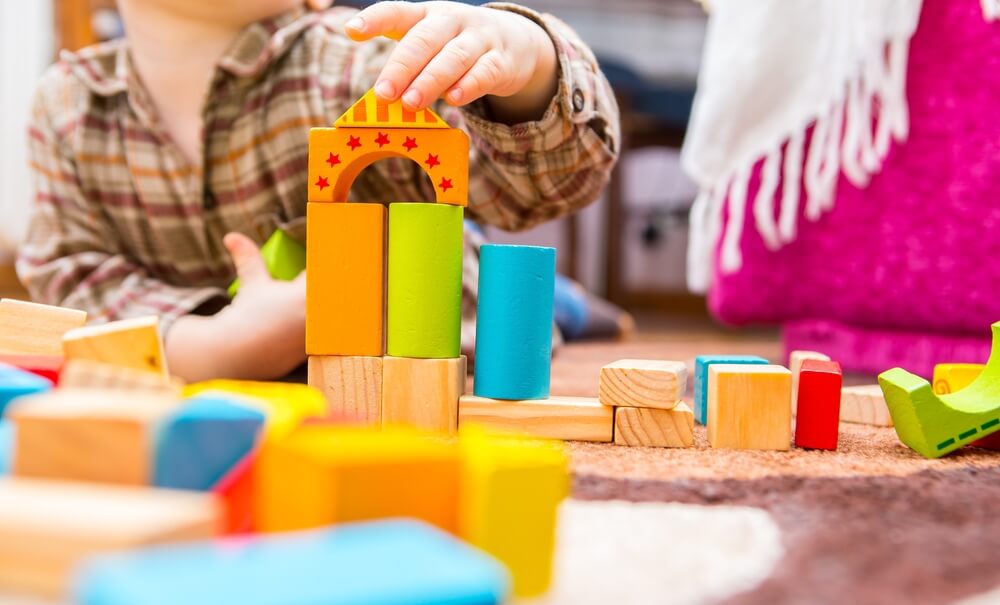Your baby is born with all 20 primary teeth, however these teeth are concealed below the gums until around six months of age. At this time, the primary teeth will begin to erupt, or pop out of the gums in a process called teething. Teething generally begins with the lower central incisor and will continue from the front of the mouth all the way to the back. In most cases, all 20 primary teeth will be erupted by the time your child reaches their third birthday. This means that your child can undergo teething episodes between the ages of six months and three years.
As many experienced mothers will tell you, teething can be a difficult time for you and your child due to the fact that teething can make your child’s gums tender, red, and sore. As a result, many teething children are fussy and irritable, and some can even have changes in their eating or sleeping habits. Another key sign that your child may be teething is when they start to gnaw on objects and are drooling more than usual. However, symptoms like diarrhea, vomiting, coughing, rash, or a fever over 101° are not normally associated with teething. Although many people believe that these are normal parts of teething, they warrant a call to your child’s pediatrician.
As a parent, it can be difficult to watch your child suffer from teething. Luckily, there are a few things you can do to help alleviate some of your child’s discomfort and make the process easier for them. Here are some baby teething comfort tips:
Feed Soft, Cool Foods
One way you can help your child during the teething process is by temporarily changing their diet to soft, cool foods. Soft foods are ideal because they require less chewing and won’t cause additional pain or irritation. Cool foods are an added bonus because they can help soothe tender gums and alleviate existing discomfort.
Use the Power of Cold

Along with feeding your child cool foods, placing something cold in their mouth is another way to help alleviate gum tenderness and soreness. Wet washcloths, pacifiers, or a rubber teething ring are all good examples of something you can throw in the fridge and then use to relieve your child’s teething discomfort. However, be sure to only use soft items that cannot damage your child’s teeth and gums. You should also avoid items that are frozen solid.
Massage Their Gums

Another way to alleviate your child’s discomfort is to gently massage their gums using your finger, a cool washcloth, or gauze pad. You will want to avoid using too much pressure and should use a gentle rubbing motion over the gums. However, keep in mind that some children respond well to gum massages, while others may not like it at all.
Beware of Certain Teething Remedies
There are certain teething remedies that can be potentially dangerous to your child. Pediatric dentists recommend against using topical numbing medications, herbal remedies, and teething jewelry since all these things can be potentially hazardous. You will also want to carefully manage the amount of acetaminophen or ibuprofen used for pain management to make sure you are not overdoing it.
Schedule Their First Dental Visit
Don’t forget that as soon as your child’s first tooth has erupted, it is time for their first visit to the dentist. During this exam, your child’s pediatric dentist will make sure their teeth are erupting properly. They will also provide you with additional advice on how to manage your child’s teething discomfort, as well as information on how to maintain your child’s oral health.






